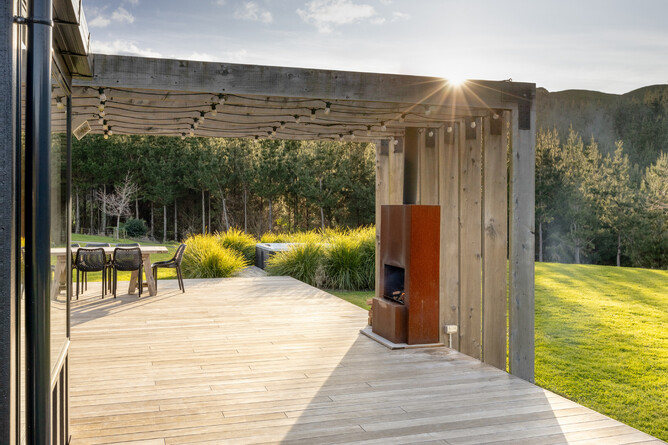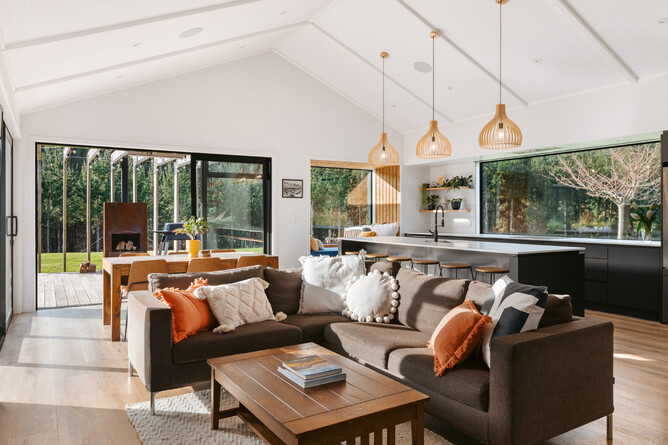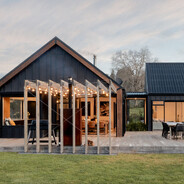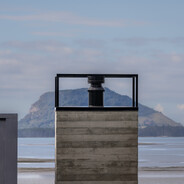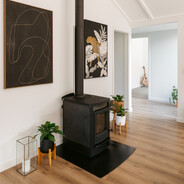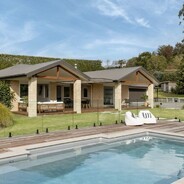Natural light plays a crucial role in the design of homes across New Zealand, not only enhancing the aesthetic appeal but also significantly contributing to energy efficiency and the well-being of residents. In this blog, we explore the importance of natural light in residential architecture in New Zealand, discuss strategies for maximising its benefits, and highlight how these approaches contribute to sustainable living.
Importance of Natural Light in Residential Architecture
Natural light is more than just illumination; it influences the atmosphere, functionality, and energy consumption of a home. In New Zealand, where the climate varies from subtropical in the north to temperate in the south, harnessing natural light effectively can help regulate indoor temperatures, reduce reliance on artificial lighting, and create spaces that are comfortable and inviting throughout the year.
Energy Efficiency and Sustainability in Architecture
Maximising natural light reduces the need for artificial lighting during daylight hours, thereby lowering energy consumption. This aligns with New Zealand's commitment to sustainability and reducing carbon emissions. Homes that are well-designed to capture and distribute natural light efficiently can achieve significant energy savings over time.
Health and Well-being
Natural light has proven benefits for human health and well-being. Exposure to natural light regulates circadian rhythms, improves mood, and enhances productivity. In residential settings, spaces filled with natural light feel more spacious, inviting, and conducive to relaxation and social interaction.
Aesthetic Appeal and House Design Flexibility
Natural light enhances the aesthetic appeal of interior spaces by highlighting architectural features, textures, and colours. It also provides flexibility in interior design choices, allowing homeowners to create visually dynamic and functional living environments.
Strategies for Maximising Natural Light in architectural house design
Effective use of natural light in residential architecture involves thoughtful planning, orientation, and selection of materials. Here are key strategies used in New Zealand home design to maximise natural light:
House Orientation and Floor Plans
Site Analysis: Before designing a home, Radley Design would conduct a thorough analysis of the site's orientation relative to the sun's path throughout the year. This helps determine optimal placement of windows and openings to maximise sunlight exposure. In NZ, homes should ideally be oriented to maximise exposure to natural light, taking advantage of the sun's path throughout the day. North-facing living areas receive the most sunlight in both winter and summer, making them ideal candidates for living rooms, kitchens, and dining areas.
Open Floor Plans: Open floor plans with fewer internal walls allow natural light to penetrate deeper into the home. This layout enhances visual connectivity between spaces and creates a sense of openness and spaciousness.
Passive Solar Design: Homes are often designed with passive solar principles in mind, where large windows and glazed openings are strategically placed on the northern facades to capture winter sun while minimising direct summer heat gain.
Window Design and Placement
Size and Placement: The size, placement, and type of windows are critical for maximising natural light. Large, strategically placed windows, especially on the north-facing facade, allow sunlight to flood into living spaces. Consider installing clerestory windows or skylights to bring light into areas that are further from exterior walls.
Glazing and Performance: High-performance glazing with low-emissivity (low-e) coatings and thermal breaks are used to enhance energy efficiency by reducing heat loss in winter and heat gain in summer. Double or triple glazing improves thermal insulation and reduces condensation, enhancing overall comfort and energy efficiency.
Interior Layout and Reflective Surfaces
Open Floor Plans: Open-plan layouts facilitate the flow of natural light between different areas of the home, creating a sense of spaciousness and connectivity. Consider using glass doors or partitions to maintain visual connections while optimising light distribution.
Use of Reflective Surfaces: Light-colored interior finishes, such as walls, ceilings, and flooring, help bounce natural light deeper into rooms, reducing the need for additional artificial lighting during daylight hours.
Daylighting Techniques
Light Shelves and Reflectors: Light shelves installed above windows can redirect natural light deeper into a room by bouncing it off a reflective surface. This technique is particularly effective in spaces with high ceilings.
Solar Tubes and Skylights: Where windows are limited, solar tubes and skylights provide additional sources of natural light, especially in interior rooms and corridors.
Outdoor Spaces and Landscaping
Outdoor Living Areas: Connecting indoor spaces with outdoor living areas through large sliding doors or expansive windows enhances natural light exposure and promotes a seamless indoor-outdoor lifestyle.
Landscaping: Thoughtful landscaping with deciduous trees and plants can provide shade in summer while allowing sunlight to penetrate in winter, further optimising natural light conditions around the home.
Enhancing Energy Efficiency through Natural Light
Passive Solar Design Principles
Thermal Mass: Incorporate thermal mass materials like concrete, brick, or stone into your home's design. These materials absorb and store heat from sunlight during the day and release it slowly at night, stabilising indoor temperatures and reducing heating and cooling energy demands.
Natural Ventilation: Combine natural light with passive ventilation strategies such as cross-ventilation and stack effect to improve indoor air quality and reduce reliance on mechanical cooling systems.
Sustainable Lighting Practices
Daylight Harvesting: Use daylight harvesting systems that automatically adjust artificial lighting levels based on the amount of natural light available. This reduces energy consumption associated with lighting while maintaining adequate illumination levels.
Energy-Efficient Lighting: When artificial lighting is necessary, opt for energy-efficient LED fixtures that consume less electricity and have a longer lifespan compared to traditional incandescent or fluorescent bulbs.
Maximising natural light in NZ home design is not only about enhancing aesthetics but also about promoting energy efficiency, sustainability, and well-being. By carefully considering factors such as orientation, window design, and interior finishes, homeowners and architects can create residences that are comfortable, healthy, and environmentally responsible.
As New Zealand continues to prioritise sustainable living and building practices, integrating natural light into residential architecture becomes a fundamental aspect of creating homes that are responsive to the local climate and respectful of natural resources. Whether you're designing a new home or renovating an existing one, embracing natural light can significantly improve the quality of life for occupants while reducing the environmental footprint of the building.
By adopting these strategies and principles, homeowners in NZ can enjoy brighter, more inviting living spaces that contribute to a sustainable future for generations to come.
